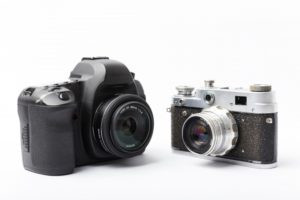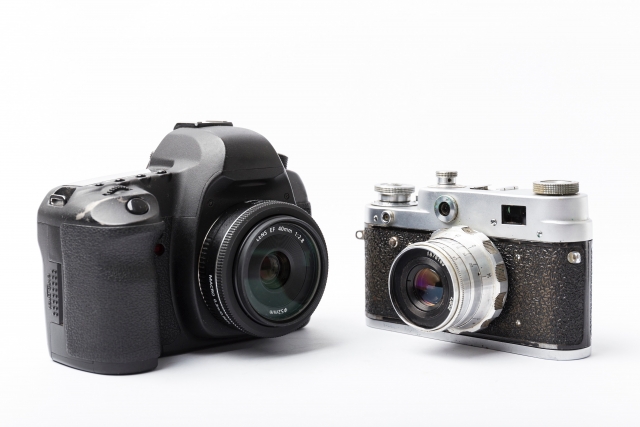センター試験も今回で最後、第6問に入ります。
第6問の配点:配点36
第6問では、6つのパラグラフがある長文を読んで、内容読解する問題で、
6問各6点=計36点
となっています。
第6問は、長文読解問題なので、
第5問と同じように、「問題」とその「逐語訳」をワンセットとして解説していくのでご了承ください。
問題文編~6つのパラグラフの長文
第6問 次の文章を読み、下の問い(A・B)に答えよ。なお、文章の左にある(1)~(6)はパラグラフ(段落)の番号を表している。
(1)
ーHistory teaches us that technology and associated discoveries have changed how we understand the world. Many technological devices provide additional range and power to our natural capacities, such as our five senses. Among these devices, many enable us to see things that we cannot see with the naked eye. This change from invisible to visible has led to tremendous growth in our comprehension of the world and has strongly influenced our ways of thinking.
| ・歴史は私たちに技術とそれに関連する発見が世界の理解の仕方を変えてきたことを教える。たくさんの高度な機器は、私たちの5感のような備え持った能力により広く強い範囲と力を提供する。これらの機器の中で、たくさんのものは私たちに裸眼で見ることができないものを見えることを可能にしている。「見えないもの」から「見える化」への変化は世界に対する理解のとてもつもない成長へと導いて、私たちの考え方にも強く影響を与えている。 |
(2)
ーIn the 17the century, a scientist noticed that by holding two lenses together in a certain way he could make an object appear larger. He used this technique to construct the first simple telescope. Using these archaic telescopes, early scientists were able to describe the surface of the Moon in detail and to see that Jupiter had at least four such satelites. Since that time, people have developed various devices that expand our range of sight, thus revealing facts about the universe that lies beyond the Earth. The telescope continues to offer us new views concerning things beyond our immediate reach.
| ・17世紀には、ある科学者が2つのレンズを一緒にもったある方法で、物体がより大きく見えることができることに気づいた。彼は最初の簡単な望遠鏡をつくるためにこの技術を使った。これらの archaic な望遠鏡を使って、初期の科学者たちは月の表面を詳細に記述して、木星には少なくとも4つのそのような衛星があることを見つけることができた。その当時から、人々は「視覚の範囲」を広げる様々な機具を開発し、地球の向こうにある宇宙の事実を明らかにしてきた。望遠鏡は直接視力で見える範囲を越えた物に関する新しい見方を私たちに与え続ける。 |
(3)
ーLater, the microscope was developed using principles similar to the telescope. The microscope allows us to study objects we normally cannot see because they are too small. Looking through a microscope opened up an entirely new world to scientists. Before the invention of the microscope, they couldn’t see the structure of human tissues and cells in plants and animals. When they saw these things, they became aware that some things that they had thought were whole and could not be divided, actually consisted of smaller components. These were only visible with the assistance of microscopes. Today, electron microscopes allow us to investigate even smaller items, such molecules. These advances have altered our concepts regarding the composition of things in the world.
| ・後に、顕微鏡が望遠鏡と似ている原理を使って開発された。顕微鏡はあまりにも小さくて普通は見ることができないものを調べることを可能にする。顕微鏡を通して見ることは科学者に対して全く新しい世界を開いた。顕微鏡の発明の前は、彼らは人間の組織の構造や植物や動物の細胞を見ることはできなかった。科学者たちがこれらのものを見た時、彼らが考えていたいつくかのものが全体のものであり、分離されることなく、実際小さな構成物質からなっていることに気づいた。これらは顕微鏡の助けがあって初めて目に見えるものであった。今日では、電気顕微鏡を用いると分子レベルの小さなものさえも調べられる。これらの発展は世界のものごとの構成について私たちの概念を変えた。 |
(4)
ーThe invention of the camera also made the invisible world visible. In the world, everything is changing. Some things change faster than we can see. The camera is a tool that gives us the power to freeze change at different points in time. Series of pictures have revealed how birds move in flight and athletes run. The camera can also help us see changes that are so gradual that we usually don’t notice them. For example, by comparing photos of the same scene taken months or years apart, we can gain insights into how societies change. There are many other ways besides these in which the camera has changed our perceptions of the world.
| ・カメラの発明も見えない世界を見えるようにしました。世界では、あらゆるものが変化している。私たちが見えるより早く変化するものもある。カメラは、時間において様々なポイントでの変化を「凍らせる」力を私たちに与えるツールです。一連の写真(連写)は、鳥が飛行している様や運動選手が走る姿を明らかにします。カメラはあまりにもゆっくりで普通であれば気づかないような変化を見えるようにすることもできる。例えば、何か月も何年も間をおいて撮られた同じ場面の写真を比べることにより、私たちは社会の変化の見方を得ることができる。これらの他にたくさんの他の方法があり、その中でカメラは世界に対する私たちの認識の仕方を変えている。 |
(5)
ーIn the late 19th century, machines that used the newly discovered X-rays revolutionaized the way in which we looked at things. Rather than seeing only the surface of an object, we gained the ability to look into it or through it, bringing the inner elements of many things into our range of view. This capability proved practical in the workplace, useful in laboratories and museums, and instructive in universities. One of the most important applications was in medicine. Doctors often had difficulty diagnosing illnesses or finding prolems inside the body. X-rays allowed them to look into their patients, identify where there were problems, and cure them. This use of X-rays brought new understandings and methods for diagnosis and treatment.
| ・19世紀の後半に、新しく発見されたX線を使った機械は私たちのものに対する見方に革新的に変えた。対象物の表面だけを見るというより、私たちはその中をのぞいたり、一渡り見る能力を得て、たくさんのものの内部の要素を目に見える範囲へと持ってきた。この能力は、仕事場では実用的であり、研究所や博物館では役に立ち、大学では有益なものであることがわかった。一番重要な活用な仕方の一つは、医療に関わるものでした。医者はよく体内の病気が診察したり、問題を発見するのに困難さを伴いました。X線は医者が病人を診察し、問題の箇所を見つけ、治療することを可能にした。このX線の活用は診察や治療に対する新しい理解や方法をもたらした。 |
(6)
ーDifferent techonological devices have made it possible to observe things that we could not see with the naked eye. This has significantly altered our understanding of the world around us. Each technological advance changes us in unpredictable ways, and each discovery increases our knowledge about the world. Just as the devices mentioned above have done, new devices will continue to impact our lives and change our ways of thinking in the future.
| ・様々な高度な機器は私たちが裸眼で見えなかったものを観察することを可能にした。これは私たちの周りにある世界の理解を大幅に変えた。それそれの技術的な進歩は予測不能な方法で私たちを変え、それぞれの発見が世界についての知識を増やしていく。上記で述べた機器がやってきたのと同じように、新しい機器は私たちの生活に衝撃を与え続け、未来の考え方を変えるだろう。 |
A:各問の解説と解答
次の問い(問1~5)の【46】~【50】に入れるのに最も適当なものを、それぞれの下の①~④のうちから一つずつ選べ
問1【46】
Which of the following is closest to the meaning of archaic as used in paragraph (2)?【46】
① advanced
② contemporary
③ ordinary
④ primitive
問1【46】解説・・・単語の意味を推測する。
問1では、pargraph(2)に出てくる “archaic“という単語の意味を推測する問題です。
選択肢の意味は下記の通り。
①先進的な
②現代的な
③普通の
④原始的な
※ “archaic” の前後を見ていると
~ by holding two lenses together・・・・
↓
He used this technique to construct the first simple telescope.
↓
Using these archaic telescopes, early ~
となっています。
ーこれからすると、「2つのレンズをもつ」ことよって、拡大して見ることができることに気づき、この simple な望遠鏡を作るのに、「この技術」を使い、そして、 these archaic telescopes を使って、と話が進んでいるので、archaic は、simple と似たようニュアンスの意味合いであることに予想されます。
☞ここから、正解は、
④ primitive だとわかります。
※archaic:古代の、時代遅れの
問2【47】
According to paragraph(3), what did people learn by using microscopes?【47】
① Cells were too small to be seen with microscopes.
② Materials were made up of smaller things.
③ Molecules were the smallest components.
④ Sets of lenses decreased the size of items.
問2【47】解説・・・顕微鏡で何を学んだのか。
問2では、paragraph(3)で、人が顕微鏡を使って何を学んだかを選ぶ問題です。
選択肢の意味は下記の通り。
①細胞はあまりにも小さすぎて顕微鏡で見ることができなかった。
②物質はより小さいものからできている。
③分子は一番小さい構成物質であった。
④何セットものレンズは、対象物の大きさを縮小した。
※上記の内容から、①、③は除外されます。レンズのセットがどうのこうのという話は出てきていないので、④も違うようです。
☞ここからすると、正解は、
② Materials were made up of smaller things. となります。
※paragraph(3)の部分で言うと、 “they became aware that some things ~ actually consisted of smaller components.” の箇所で分かります。
問3【48】
According to paragraph(4), what do cameras enable us to do?【48】
① To capture moments in time accurately
② To compare rapid social changes
③ To make invisible things move faster
④ To predict what will happen
問3【48】・・・カメラは何を可能にするのか。
問3では、paragraph(4)で、カメラが私たちに何を可能にさせるのかを問う問題です。
選択肢の意味は下記の通り。
①時間の瞬間を正確につかまえること
②急激な社会変化を比較すること
③見えないものをより速く移動させること
④何が起こるのかを予測すること
※「カメラ」が「可能」なことなので、③と④は最初に除外していもいいと思います。
後は①か②ですが、paragraph(4)には、”The camera is a tool that gives us the power to freeze change at different points in time.” となるので、
☞正解は、
① To capture moments in time accurately となります。

問4【49】
According to paragraph(5), how are X-rays used?【49】
① To find the locations of problems in the body
② To improve visibility of objects’ surfaces
③ To learn when paintings were created
④ To test the quality of chemical compounds
問4【49】・・・X線はどのように使われるのか。
問4では、paragraph(5)で、X線がどのように使われるのかを問う問題です。
選択肢は下記の通り。
①体の問題の場所を見つける
②物体の表面の視覚化を改善する
③絵が描かれていた時代を知る
④化学的物質の質を検査する
※paragraph(5)を読むと、「表面」ではなく「内部」のもの見るのに革命的なものであり、特に in medicine で重要な役割を果たしている、という内容で書かれています。
☞これからすると、正解は、
① To find the locations of problems in the body となります。
※”X-rays allowed them to look into their patients, identify where there were problems, and cure them.”という部分があります。
問5【50】
What is the main idea of this passage? 【50】
① Applications of two lenses can improve people’s sight.
② Development of technology affects our ways of thinking.
③ People need to be aware of the dangers of technology.
④ Technology plays a vital role in changing our five senses.
問5【50】・・・この英文の主要な考えは何?
問5は、この英文が何についての英文なのかを問う問題です。
選択肢の意味は下記の通り。
①二つのレンズの応用は人々の視力をさらに良くすることができる。
②技術の発展は私たちの考え方に影響を与える。
③人々はテクノロジーの危険性を知る必要がある。
④テクノロジーは私たちの5感を変えるのに重要な役割を果たす。
※①の「二つのレンズ」は望遠鏡の最初の部分に出てきただけで、あとは扱われていないので、ふさわしくありません。③の「テクノロジーの危険性」については、今回の英文にはほぼ扱われていません。④についても同じです。
☞このことから、正解は、
③ Development of technology affects our ways of thinking. となります。
B:問の解説と解答
次の表は、本文のパラグラフ(段落)の構成と内容をまとめたものである。【51】~【54】に入れるのに最も適当なものを、下の①~④のうちから一つずつ選び、表を完成させよ。ただし、同じものを繰り返し選んではいけない。
| Paragraph | Content |
| (1) | Introduction |
| (2) | 【51】 |
| (3) | 【52】 |
| (4) | 【53】 |
| (5) | 【54】 |
| (6) | Conclusion |
① Examining the interior of things
② Exploring the universe of small things
③ Looking at instants during a series of changes
④ The use of lenses to look out into space
解説・・・【51】~【54】の内容
選択肢の内容を先に確認します。
①「もの」の内部を調べること
②小さなものの世界を探検すること
③一連の変化の間の瞬間を見ること
④宇宙を見るためのレンズの活用
※Aの問題がそれぞれ paragraph (2)~(5)の内容になっているので、その問題内容を
確認しながら、考えていくと速く解答することができると思います。
paragraph(2):2つのレンズ、望遠鏡、月、木星
paragraph(3):顕微鏡、小さいもの
paragraph(4):カメラ、瞬間、変化がわかる
paragraph(5):X-rays、内部、医者、病気発見
ここからすると、正解は、
paragraph(2)【51】→④
paragraph(3)【52】→②
paragraph(4)【53】→③
paragraph(5)【54】→① となります。
これで入試センター試験については終了です。




コメント